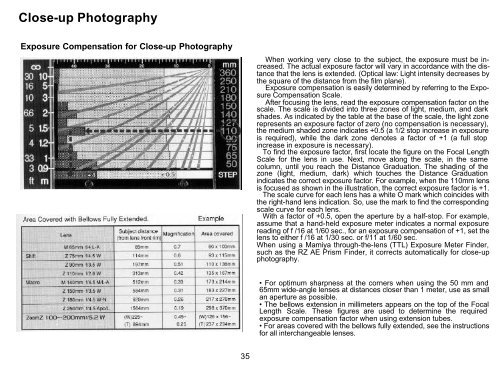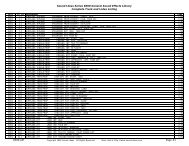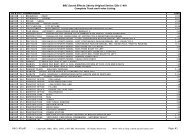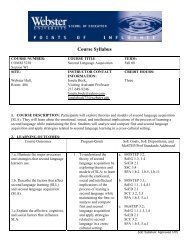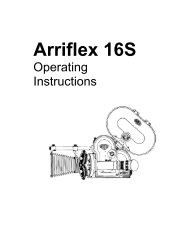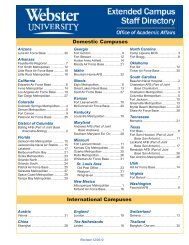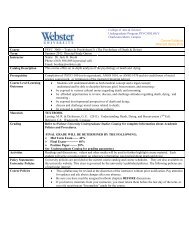Create successful ePaper yourself
Turn your PDF publications into a flip-book with our unique Google optimized e-Paper software.
Close-up Photography<br />
Exposure Compensation for Close-up Photography<br />
35<br />
When working very close to the subject, the exposure must be increased.<br />
The actual exposure factor will vary in accordance with the distance<br />
that the lens is extended. (Optical law: Light intensity decreases by<br />
the square of the distance from the film plane).<br />
Exposure compensation is easily determined by referring to the Exposure<br />
Compensation Scale.<br />
After focusing the lens, read the exposure compensation factor on the<br />
scale. The scale is divided into three zones of light, medium, and dark<br />
shades. As indicated by the table at the base of the scale, the light zone<br />
represents an exposure factor of zero (no compensation is necessary),<br />
the medium shaded zone indicates +0.5 (a 1/2 stop increase in exposure<br />
is required), while the dark zone denotes a factor of +1 (a full stop<br />
increase in exposure is necessary).<br />
To find the exposure factor, first locate the figure on the Focal Length<br />
Scale for the lens in use. Next, move along the scale, in the same<br />
column, until you reach the Distance Graduation. The shading of the<br />
zone (light, medium, dark) which touches the Distance Graduation<br />
indicates the correct exposure factor. For example, when the 110mm lens<br />
is focused as shown in the illustration, the correct exposure factor is +1.<br />
The scale curve for each lens has a white O mark which coincides with<br />
the right-hand lens indication. So, use the mark to find the corresponding<br />
scale curve for each lens.<br />
With a factor of +0.5, open the aperture by a half-stop. For example,<br />
assume that a hand-held exposure meter indicates a normal exposure<br />
reading of f /16 at 1/60 sec., for an exposure compensation of +1, set the<br />
lens to either f /16 at 1/30 sec. or f/11 at 1/60 sec.<br />
When using a <strong>Mamiya</strong> through-the-lens (TTL) Exposure Meter Finder,<br />
such as the RZ AE Prism Finder, it corrects automatically for close-up<br />
photography.<br />
• For optimum sharpness at the corners when using the 50 mm and<br />
65mm wide-angle lenses at distances closer than 1 meter, use as small<br />
an aperture as possible.<br />
• The bellows extension in millimeters appears on the top of the Focal<br />
Length Scale. These figures are used to determine the required<br />
exposure compensation factor when using extension tubes.<br />
• For areas covered with the bellows fully extended, see the instructions<br />
for all interchangeable lenses.


